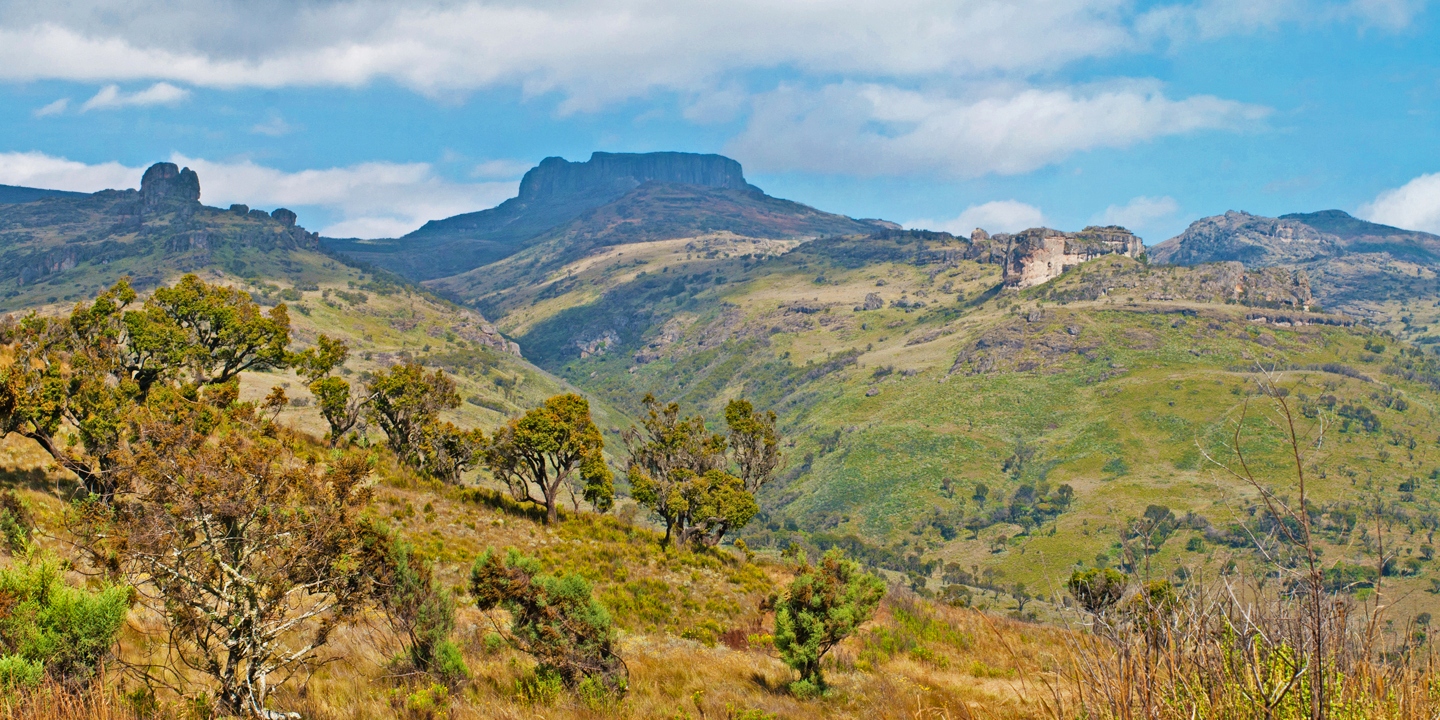This newsletter gives you highlights of selected sustainability insights that were, perhaps, too long (you) didn’t read (TLDR) or there’s just too much out there to read. The highlights presented cover insights gleaned from a global, regional (African), and national (Kenyan) perspective. Happy reading!
GLOBAL
State of Global Climate 2024

In March 2025, the World Meteorological Organisation (WMO) published this annual report that gives insight to climate impacts reaching new heights. With leaders around the world shifting commitments to climate action and therefore its consequences to societies, here are some key insights from the report for you to consider:
-
In 2024 global temperature reached its highest record in 175 years (1.55° C) which marks a critical point, but we are not as yet gone beyond the Paris Agreement commitments (limit global warming to well below 2°C above pre-industrial levels, while also pursuing efforts to limit the increase to 1.5°C), as this is measured in long-term averages.
-
Concentrations from the 3 key Greenhouse Gases, carbon dioxide, methane, and nitrous oxide, continue to increase.
-
Oceans are heating more, sea levels rising has doubled since the 1990s and acidification is intensifying particularly for the Indian and Pacific Oceans which will significantly impact marine ecosystems and marine life.
-
Extreme weather events are increasing, development goals are being undermined and early warning systems gaps are not being addressed effectively.
The report urges for action in adaptation and resilience, emissions reduction, better data and monitoring, alignment in finance and policy to real needs, and equity in address adaptive capacity of communities that bear the burden of climate impacts.
My two cents: Even if decision-making and policy choices shift away from the climate and nature positive action needed globally; the impacts will continue and as we do little to change it, get worse. Every individual and organization needs to be taking climate risk into consideration and action. If we aren’t careful (and it seems like we are not) – we will be locked into a whole new world. Queue: the disaster preppers…
China’s Ambitious National Parks Plan

China is developing the world’s largest system of national parks that will cover 272 million acres and establish 49 parks by 2035 (in 10 years).
The country established its first national parks in 2021, and with this new plan the national parks system will prioritise conservation over tourism to support: conserving endangered species like the renowned Panda; protecting diverse landscapes e.g. rainforests, glaciers, wetlands, e.t.c.; and create synergy between cultural heritage, public education and economic development.
By designing its parks to align with global best practices and learn from past mistakes from other countries in establishing large-scale parks e.g. community displacements, China could potentially set a new global standard for national parks.
My two-cents: China and other countries like Democratic Republic of Congo, Bolivia, Amazon-based countries, and many others are making concerted efforts to protect nature. While many countries’ plans may be thwarted by vested interests, it will be interesting to see how China’s ambitions unfold and perhaps add a ‘notch’ to the country’s ongoing climate e.g. energy and nature action.
AFRICA
State of Climate in Africa 2024

The Africa specific World Meteorological Organisation (WMO) report was published in May 2025 and a region specific report makes sense as the African continent will be the most impacted continent by climate change e.g. 17 of the 20 most impacted countries are in Africa. This continent-specific report highlights that:
-
All regions of the continent are warming significantly with North Africa recording the highest warming just above 2°C; and extreme weather events across the continent have increased in frequency and intensity.
-
Extremes in rain and droughts are significantly impacting populations e.g. millions were displaced by flooding in the Sahel, West Africa, East and Central Africa. Food security is also severely impacted e.g. cereal harvests in North Africa dropped by 7%, in Southern Africa cereal yields fell between 16% – 50%, and across East Africa food insecurity escalated.
-
All oceans around Africa are heating, and sea levels rise for the continent exceeds global averages. These will have current and long-term impacts on the blue economy, marine ecosystems and life, coastal populations, towns and cities, and infrastructure.
Despite awareness on the impacts of climate change, adaptation efforts on the continent as well as support for adaptation from other countries falls far behind. But there has been positive progress thanks to advances in AI, weather prediction models, and mobile alerts to improve weather forecasting, although gaps in early warning systems still persist.
My two-cents: Irrespective of emissions contribution, and calls by heads of state, policy-makers, civil societies groups, e.t.c. for international support – climate impacts and risks are too real to ignore any further for a continent where the connection between people’s lives, nature and the environment is so readily interwoven. All I can think to say now is: Prepare communities and neighbours prepare, no one’s coming. ‘Whether the egg crashes on the coconut or the coconut crashes on the egg, it is the egg that suffers.’ – Nigerian proverb.
KENYA
Reflections on recent forests and cross-border forest ecosystems protection in Kenya

Kenya and Uganda recently signed a Memorandum of Understanding (MoU) to conserve Mt. Elgon’s ecosystem. Mt. Elgon has 74,000 hectares of gazetted forest, is a critical water tower for the country as well as feeding into 3 substantive rivers: Nzoia, Turkwel and Malakisi; and this region is also an internationally recognized biodiversity hotspot.
The MoU seeks to foster cooperation, policy harmonisation, joint restoration efforts, and institutional capacity-building. November 7th was also announced as Mt. Elgon Day by Kenya’s Principal Secretary, Forests, Gitonga Mugambi.
At the same time, Kenya Forest Services, is being heavily criticized for downplaying threats to Kenya’s forests from deforestation and land grabbing. Key forests under threat from government plans are: Karura Forest, Aberdares Forest, Suam Forest (Mt. Elgon area), Oloolua Forest and Ngong Road Forest. A number of Kenyan civil society-led environmental groups are challenging the government plans for these gazetted forests in court, as these plans threaten national climate action, water resources, ecosystem services and livelihoods.
In April 2025, Kenya submitted its 2035 Nationally Determined Contributions (NDCs) for climate action. In its submission the government commits to:
-
Rehabilitate and protect natural forests using the REDD+ approach. This includes both land and water-based ecosystems, aiming to curb emissions from land use change, protect biodiversity, and preserve critical ecosystem services. The REDD+ approach is a framework developed by the UN Framework Convention on Climate Change (UNFCCC) to reduce greenhouse gas emissions by reducing deforestation and forest degradation, while also promoting sustainable forest management and enhancing carbon stocks.
-
Increasing tree cover through extensive afforestation, reforestation, and promotion of agroforestry. This includes supporting carbon sequestration, enhancing biodiversity, and strengthening nature-based solutions to climate change.
-
Under the adaptation component, Kenya’s NDC prioritizes restoring degraded public and private land through afforestation, reforestation, agroforestry, commercial and community forestry. These actions aim to enhance ecosystem-based adaptation, improve resilience of rural livelihoods, and support food and water security.
These recent contrasting narratives i.e. Mt. Elgon ecosystem conservation, and the criticisms on (increasing) threats to Kenya’s forests; reflect policy commitment incoherence and raise concerns on greenwashing. Additionally, these actions also suggest inadequate community and stakeholder engagement for long-term responsible and equitable development.
My two-cents: Inequality, climate change, natural resource depletion realities require sustainability leaders in government, and business to deliver accountability, participatory governance, and systems thinking to navigate the complex landscape of sustainable resource management for people.
